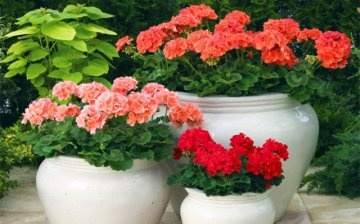How to transplant geraniums correctly
Not only professional flower growers have a lot of worries about their green economy. Lovers who grow flowers in their apartments and houses also need to take care of all the plants every day.
Many of us are accustomed to the fact that a plant purchased in a store can be safely placed on a windowsill or shelf, we water it as needed and sometimes fertilize it. But not all novice flower growers think that sooner or later the plants may need a transplant.
Those who grow geraniums know that this flower transplant plant is not very fond of. But sometimes circumstances develop in such a way that the question of how to transplant geraniums arises with an edge and it is impossible to postpone the transplant in any way.
The first reason for transplanting geraniums may be the fact that its root system hangs with a "washcloth" from the drainage holes, while the plant has become sluggish, it reacts poorly even to the introduction of nutrients with fertilizers. This suggests that it is time to change the substrate and increase the volume of the pot.
How to transplant geraniums correctly?
For this plant, large pots are not needed, in them geraniums will bloom poorly and stunted. Therefore, when transplanting, select a pot that is only 4-5 cm in diameter more. There must be drainage holes at the bottom of the pot through which excess water will come out.
At the bottom of the pot, it is imperative to pour a layer of expanded clay, broken shards from clay pots, you can do with pieces of foam. Before removing the geranium from the old pot, water it well so that the plant can easily move away from the walls of the pot along with the earthy clod.
Directly with the old clod of earth, place the geraniums in a new pot and fill the rest of it with the prepared substrate. You can water the transplanted plant about the third day.




It tells about transshipment (without removing the earthen clod from the horses). If you thoroughly clean the root system from the roots, then in this case it is called a transplant. It is more traumatic, but it helps to see the condition of the roots.
I recently transplanted a geranium sprout that survived from last year - from a friend's geranium that grew in the garden. I just cleaned the roots - not on purpose, it happened. I was surprised that the root system did not add much over the winter.